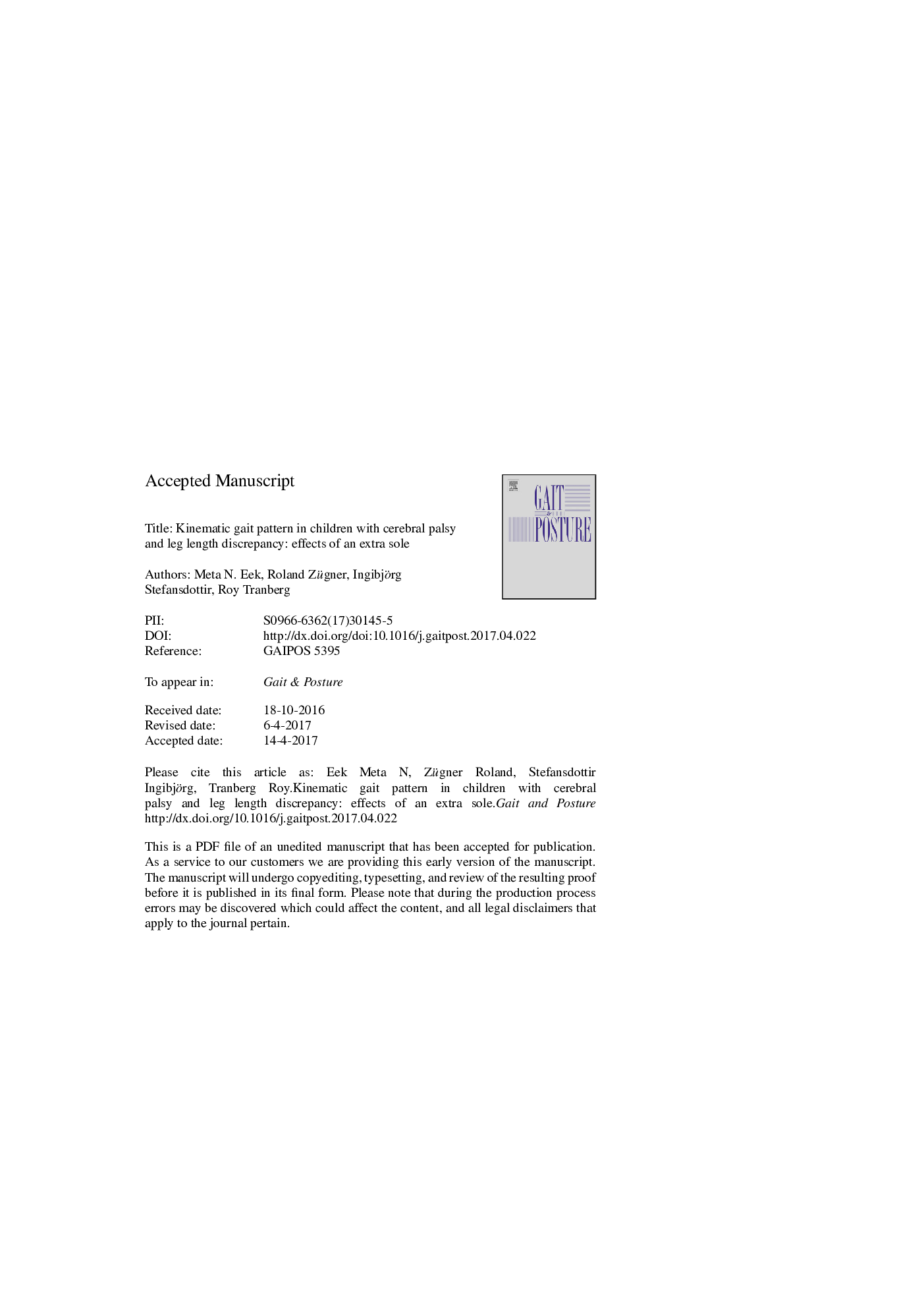| Article ID | Journal | Published Year | Pages | File Type |
|---|---|---|---|---|
| 5707875 | Gait & Posture | 2017 | 23 Pages |
Abstract
The gait pattern in children with cerebral palsy (CP) often differs from normal, with slow velocity, problem with foot clearance and increased stress on joints. Several factors, such as muscle tone, impaired motor control, muscle contractures, skeletal deformities and leg length discrepancy affect gait. Leg length discrepancy can be treated surgically or with elevation of the shoe on the short leg. The purpose of this study was to examine whether compensating for leg length discrepancy, with elevation of the sole, leads to a change in movement pattern during walking in children with spastic CP. Results: Ten children with spastic CP, able to walk without aids, and 10 typically developing (TD) children aged between seven and 14 years were assessed with 3D gait analysis: 1) barefoot, 2) with shoes and 3) with an extra sole beneath the shoe for the shorter leg. All children with CP had a leg length discrepancy of more than or equal to 1.0 cm. In the barefoot condition, the velocity was slower and the stride length was shorter, in children with CP compared with TD. The stride length and gait velocity increased in children with CP with shoes and shoe + sole and the stance time became more symmetrical. Among children with CP, there was more flexion in the longer leg relative to the short leg during barefoot walking. Differences in the kinematic pattern between the long and the short leg decreased with the extra sole.
Related Topics
Health Sciences
Medicine and Dentistry
Orthopedics, Sports Medicine and Rehabilitation
Authors
Meta N. Eek, Roland Zügner, Ingibjörg Stefansdottir, Roy Tranberg,
